Hairstyling: History, Evolution and Modernization
14/03/2024 2024-03-14 17:58Hairstyling: History, Evolution and Modernization
Hairstyling That was Popular in Ancient Times: The Hairdressing History
Have you ever wondered what haircuts were popular in ancient Egypt and how individuals used to dress their hair? Unfortunately, we don’t spend much time studying the history of hairdressing, which is unfortunate because it’s a fascinating topic that deserves more attention. Particularly when the funfair is approaching and we’re searching for imaginative ideas to perfectly coordinate our hairstyle with the ensemble that embodies a specific époque.
Hair is unquestionably one of the components—along with clothes—that allow us to express our individuality and add flair to our looks. We are therefore quite ready to attend to the demands of our hair, to care for the strands, to massage them with oils, and to style them.
In actuality, individuals have been dedicating their time to hair care regimens since the beginning of time. Naturally, the treatments that people exposed their hair to changed along with the meaning of contemporary hairstyles, which have been modified over the course of decades.
The History of Hairdressing
In actuality, hair has been chopped since the dawn of humankind. Initially, the removal of the extra hair was done purely for pragmatic purposes. Long hair was obviously bothersome and made it difficult to perform regular tasks. As a result, people used to singe it or trim it with a flint knife.
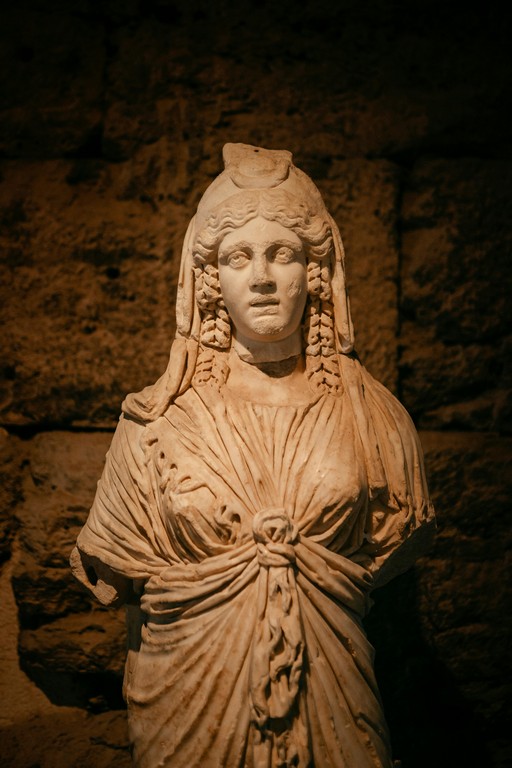
Pexels
The aforementioned techniques, however, are not at all similar to the widely used velaterapia, also referred to as candle cutting. To get rid of split ends, you have to singe your hair ends with a candle light. It is difficult to refer to the actual processes as the art of hairstyling.
Everything altered at the same time as civilization emerged. People began to pay more attention to hygiene along with taking better care of themselves, and it was through this that they discovered the essence of beauty. Taking care of one’s hair at that point developed into a human necessity, and over time it became a means of expressing one’s individuality. Therefore, it is believed that hairdressing originated in ancient Egypt, Rome, and Greece.
The trend shifts. Hairdos: A History
Let’s start our tour through the history of hairdressing and fashionable hairstyles in antiquity. The earliest hair-cutting instruments were invented during this very period. They generally looked like the modern straight razors or sharp reaping hooks. Aside from these, people began utilising combs and hair sticks as hair ornaments. The hairstyles of the Egyptians, Romans, and Greeks varied greatly, despite their commonalities.
Which hairstyles were popular in ancient times?
Egyptian hair dolls
The ancient Egyptians understood appearance to be important. What kind of hairstyles were popular in Egypt? In fact, popular culture has taught us that the Egyptians formerly had sleek, black hair that fell to the shoulders and had a straight fringe; this hairdo is closely linked to Cleopatra. Not only was the traditional Cleopatra bob popular at the time, but many people also preferred to have long, silky hair.
Pageboy hairstyles were equally popular, especially during the Old Kingdom era. People were able to get around the issue by wearing wigs because it was difficult to style natural hair. Furthermore, some Egyptians voluntarily donned microbraids that either completely covered their heads or served as subdued hair ornaments. Because of the intense heat, the slaves and attendants who worked, for example, on the construction of pyramids used to shave their heads entirely bald.
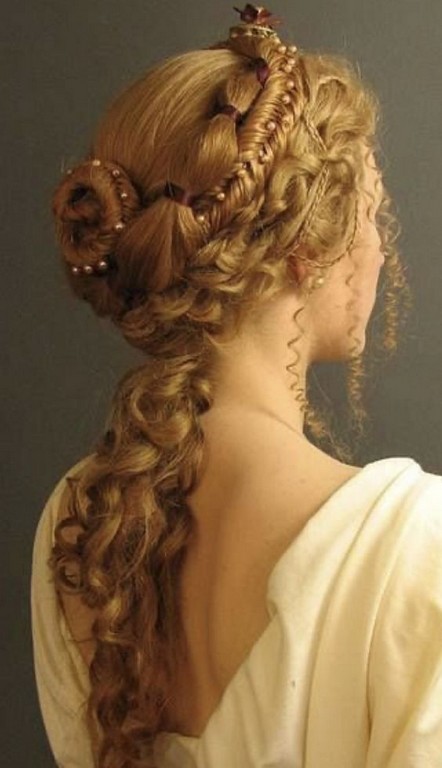
It’s significant to note that male hairstyles in ancient Egypt were typically similar to those of women. The wealthy Egyptian male population, who differed from the shaven slaves, also had long, straight, black hair.
A variety of hair accessories were also necessary, mostly adornments like beads and tints that were colourful and golden. Nevertheless, it was thought that colour was the most important ornamentation. Dark brown and black hair ruled the world of hair. How were hair colours applied in ancient Egypt? They typically employed a unique henna concoction. They also understood the need for hair oiling; therefore, it was acknowledged that this process was essential to maintaining healthy, beautifully glossy hair.
It’s interesting to note that only female slaves were skilled in hair maintenance and style during that era. Their job was to style and maintain other people’s hair. Not every beauty treatment or hair treatment was done on its own.
Greek hairdos
Hairstyles and natural hair tints are synonymous with ancient Greece. Hairdressing was seen as an artistic endeavour back then. The most common ones were the flat hairstyles, usually worn just above the neck and knotted back. Merely a bun? Is there any artistic merit to this?
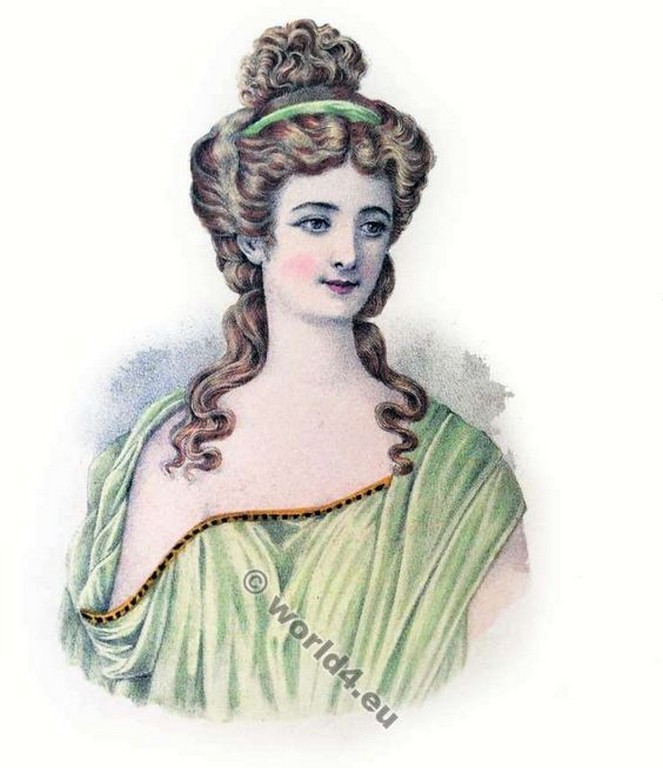 Pinterest
Pinterest
Finely and meticulously braided strands lavishly adorned with a variety of headbands, circlets, and other similar embellishments were the most distinctive aspect of Greek hairstyles. Ancient Greece had more hair ornamentation than any other period in hairdressing history. What mattered most was the cohesiveness and coherence that an outfit and hairstyle created. It’s crucial to understand that these Greek women weren’t the only ones sporting fashionable hairstyles. Men were likewise concerned with their hair in ancient Greece, but the hairstyles they wore were rather curled and closely trimmed.
ROMAN HAIRDOS
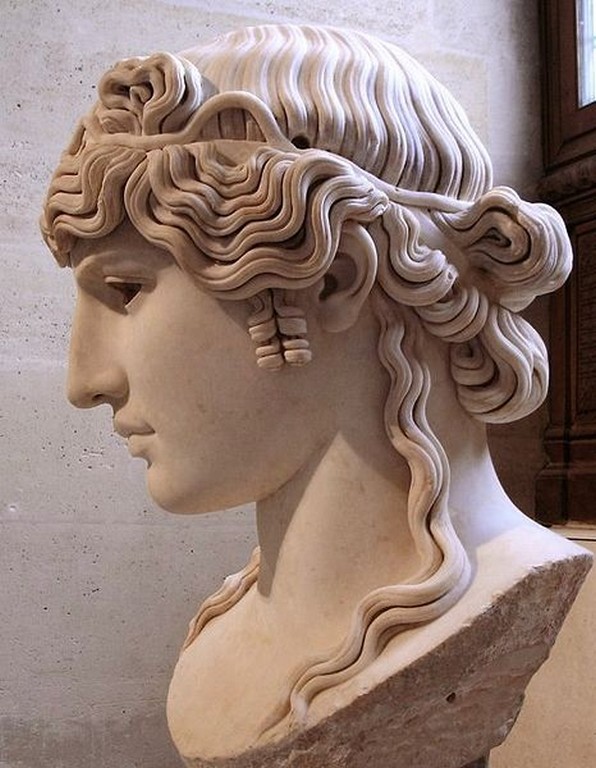
Roman fashion is regarded as really diverse, in contrast to Greek and Egyptian styles, because a Roman hairstyle was meant to complement a certain individual. Nonetheless, it is simple to identify a few clear patterns that some social groups adhered to. How were hairstyles done in classical Rome?
The most common style, particularly with sensible ladies, was hair pulled up and pulled into a tight bun that looked like a pretzel. Occasionally, the hair was tied into tiny braids before constructing this bun, which were then fastened to the head. The heads of males who preferred short, simple hairstyles bore similar, equally functional hairstyles.
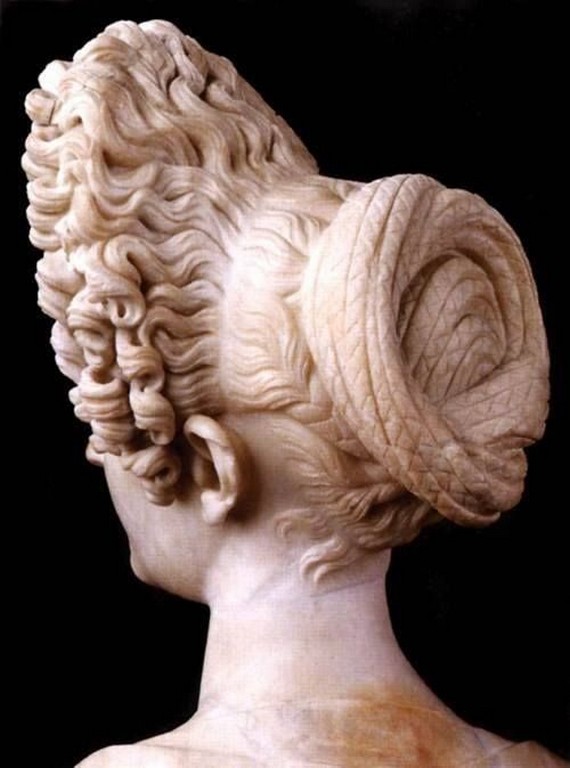
Roman hairdressing reached its peak during the Roman Empire‘s golden age, when stunning building-inspired hairstyles gained popularity. Indeed, there is much that modern architects may learn from the hairdressers of antiquity. Despite the striking sizes, this carefully and beautifully styled hair, which was frequently pulled back in a bun, looked natural.
Roman hairstyles were almost never left unadorned. Naturally, the hair ornaments made of bronze, gold, or silver were the most voluntarily selected. Ivory hair clasps were also very fashionable.
Hairstyles of the Past contrasted with the Present
The practice of hairdressing evolved quickly throughout antiquity. It was during this time that many of the modern hairstyles that are trendy today got their start. Many of the hairstyles that were popular in ancient Greece, Rome, and Egypt are still in use today, although they are usually slightly altered. Nevertheless, there are a lot of parallels. We take care of our hair and want it to appear nice, much like the ancient people did. We also enhance our hair. Like the ancients, we reach for hair oils to protect against the sun, condition, and add gloss to our hair. It’s evident that hairstyling techniques as well as vintage hairstyles serve as sources of inspiration.












